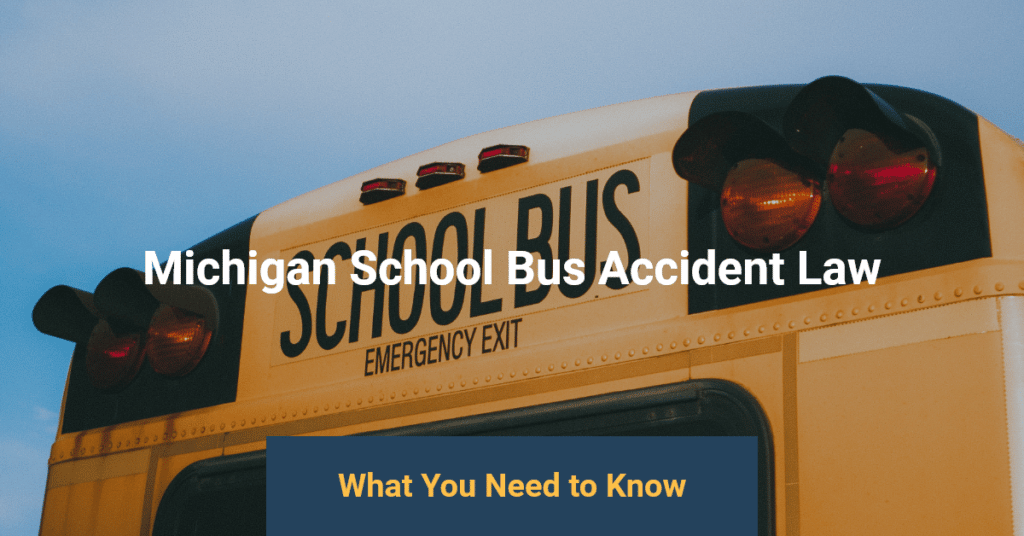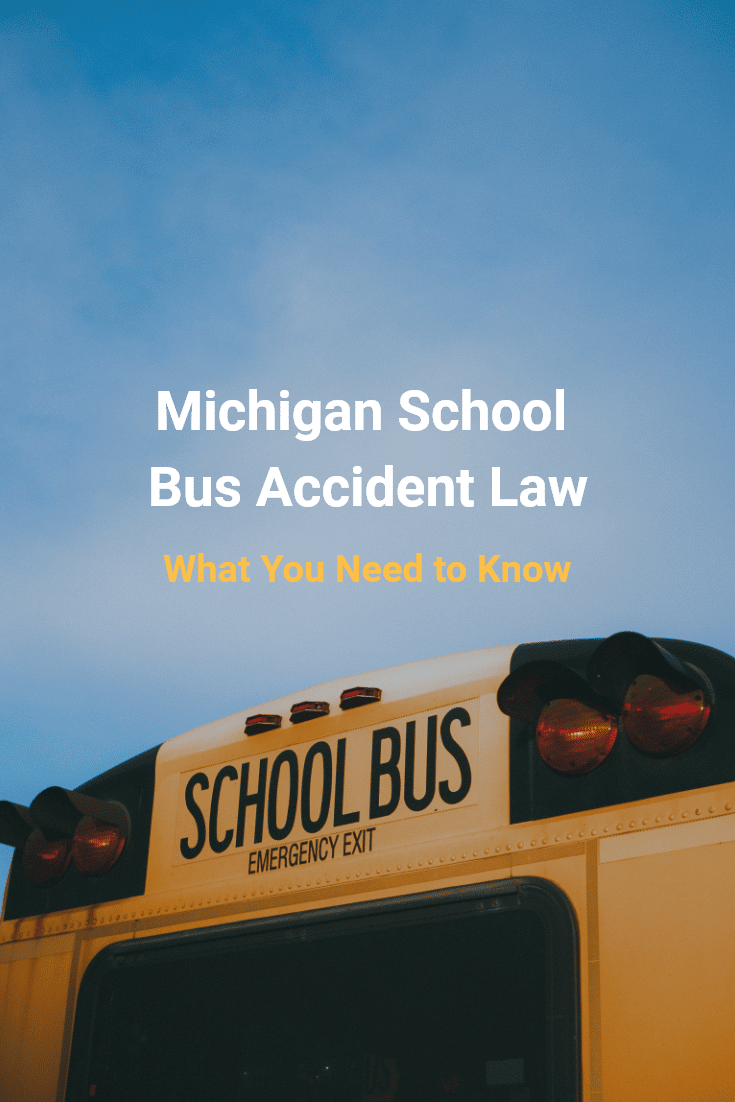Michigan School Bus Accident Law: What You Need To Know

Protecting our children from being injured in a Michigan school bus accident is a top priority for parents and for our communities.
The Federal Motor Carrier Safety Administration (FMCSA) has said it shares “a deep commitment to high safety standards for school bus drivers who keep our most precious cargo – our children – safe as they travel to and from school.”
Yet despite the fact that we entrust school buses to safely transport our children, the motor vehicles are exempt from the important federal safety rules that could prevent a bus accident from occurring.
The Safety Regulations issued by the U.S. Department of Transportation’s Federal Motor Carrier Safety Administration (FMCSA), which apply to all other commercial motor vehicles and other buses in the U.S., do not apply to school buses.
This is just one reason why it is important to hire an experienced Michigan school bus accident lawyer, as attorneys who mistakenly litigate a school bus injury case by the same rules as a commercial motor vehicle crash put their clients’ lawsuits in great jeopardy. In addition, experienced bus accident lawyers can highlight the glaring safety issues that occur because they are not covered by the federal rules.
For example, here are the FMCSA safety regulations that school bus drivers are exempt from:
- Driver qualification (including physical qualification and medical certification) regulations
- Hours-of-service regulations
- Vehicle maintenance and repair rules
- Bus inspection program requirements
- Vehicle operation regulations
- Insurance and registration regulations
Generally, the only two FMCSA safety regulations that apply to the bus drivers who are driving our children back and forth to school are the following:
- Bus drivers must have a valid commercial driver’s license (CDL) (49 CFR Part 383)
- Bus drivers must comply with the FMCSA’s drug and alcohol testing requirements (49 CFR Part 382)
However, under very limited circumstances such as when a school bus provides “in-hire” transportation for an out-of-state field trip, some FMCSA safety regulations may apply.
Whatever the reason, our attorneys fail to see why the people whom we entrust to safely transport our children are exempt from many of the federal safety regulations that we think are important enough to apply to commercial bus and truck drivers transporting less “precious cargo,” such as the lifeless, inanimate product that will stock the shelves of our local grocery store and shopping malls.
Who is liable in a Michigan school bus accident?
The driver and the owner of the bus may be held liable if the driver was at-fault in causing the Michigan school bus accident. However, if the accident was caused the at-fault driver of another vehicle, then that driver may be liable and a claim may be made against his or her third party car insurance.
What if you get hit by a driver who didn’t stop for a school bus?
Michigan law states that all drivers must stop at least 20 feet away from a school bus that has stopped and has its red lights flashing. Drivers who violate this no-passing law can be fined and even sent to jail if their violation of this law injures or kills someone.
Starting October 11, 2021, buses are allowed to be equipped with “stop-arm cameras” that take pictures and/or videos of the drivers and license plates of vehicles who unlawfully overtake a stopped school bus.
What if my parked car was hit by a school bus?
If you were not occupying your parked car at the time it was hit by the school bus, then you can file a property protection insurance claim for your vehicle damage with the insurance company covering the bus.
If you were inside your vehicle, then you will have to use your collision coverage to pay for your vehicle damage repair costs. Alternatively, you could file a mini tort claim under the motor vehicle exception to governmental immunity. (MCL 691.1405)
Be careful with mini tort releases from the government as they often include language releasing the government from all claims. Talk with an experienced bus accident lawyer before you sign the release.
How texting and cell phone laws can prevent a Michigan school bus accident
The cell phone law can help prevent a Michigan school bus accident from happening. The law prohibits bus drivers from texting while driving and from talking, calling or answering a mobile phone while driving. (MCL 257.602b(2) and (3))
Research has shown that texting drivers are 23 times more likely to be involved in a motor vehicle crash and that dialing a hand-held cell phone while driving makes the driver 12 times more likely to crash.
Michigan school bus accident statistics
Here are the Michigan school bus accident statistics from 2015 to 2019:
- School bus-related crashes increased from 910 in 2015 to 1,197 in 2019.
- Injuries from school bus-related crashes increased from 228 in 2015 to 250 in 2019.
- Fatalities from school bus-related crashes increased from 1 in 2015 to 6 in 2019.
Need help? Call the attorneys at Michigan Auto Law
If you have been injured in a bus accident and would like to speak with an experienced attorney, call us toll free anytime 24/7 for a free consultation with one of our attorneys. You can also get help from an experienced accident attorney by visiting our contact page or you can use the chat feature on our website.
(Source: Michigan Traffic Crash Facts, Fact Sheets, “School Buses,” 2015 and 2019)






